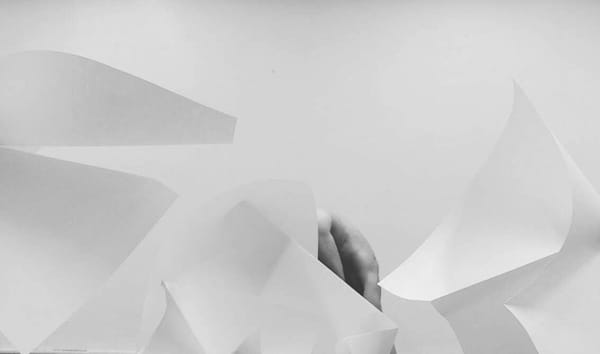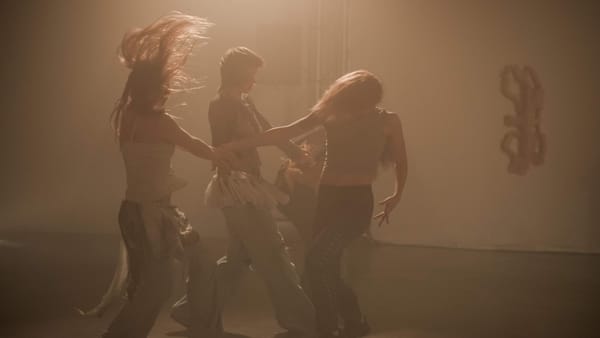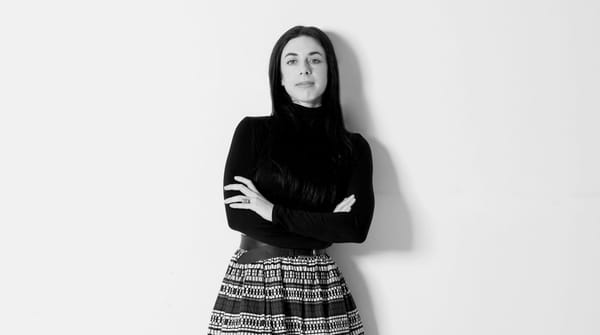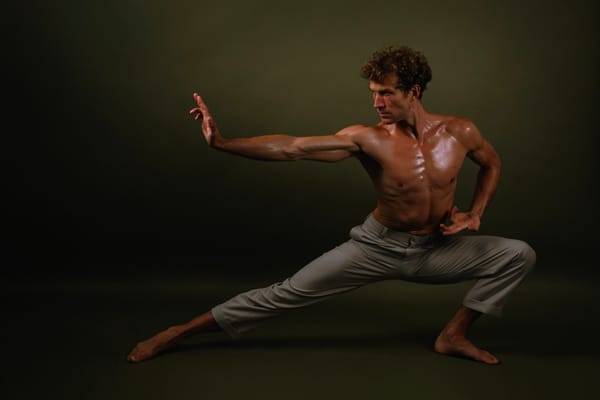Zoë Bastin’s Dance with the Ocean’s Force in "The Break"
By Leila Lois — On Williamstown Beach, Zoe Bastin stages a choreography of defiance and endurance, where the waves echo the body’s refusal to be contained.
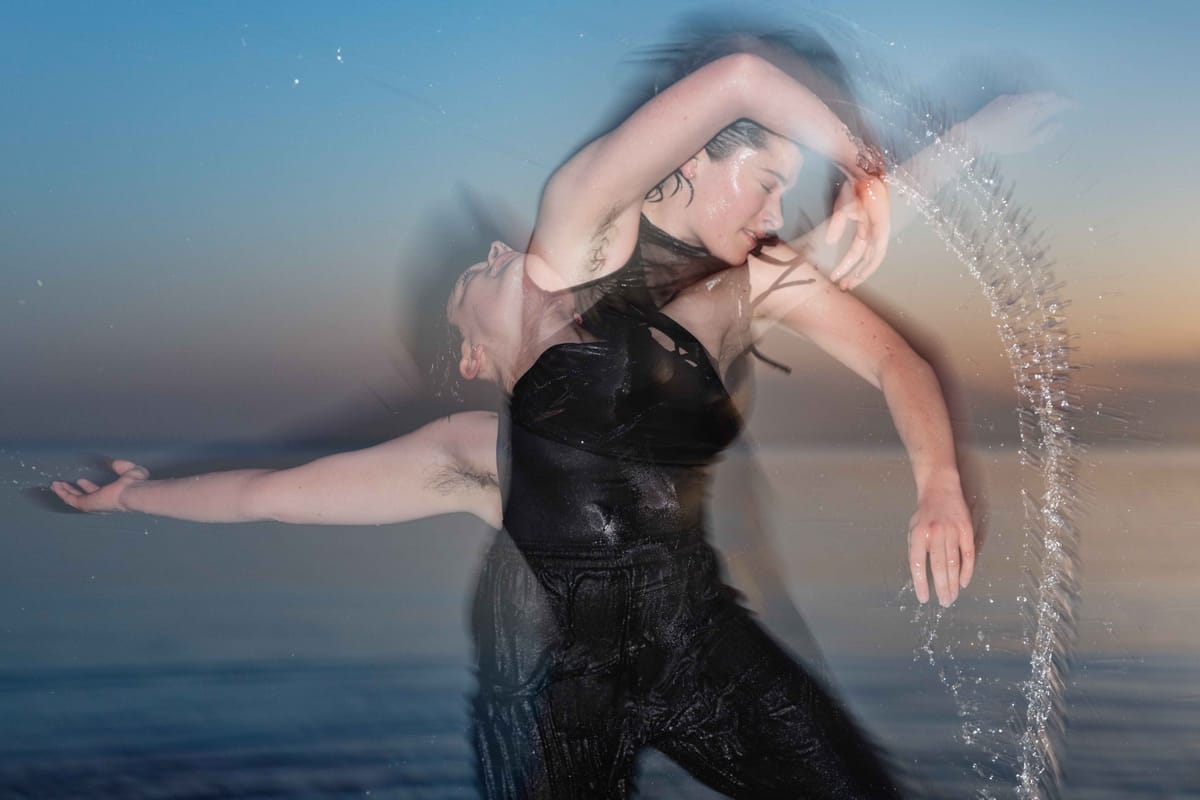
by Leila Lois
Every morning at dawn, they gather at the water's edge. The Jellies, as they're known at Williamstown Surf Life Saving Club, are a group of older women who have turned cold-water swimming into a ritual of community and courage. It was here, among these fearless swimmers, that choreographer Zoë Bastin found their inspiration for The Break, a 50-minute site-specific dance performance that transforms Williamstown Beach into a living stage where choreography and coastline merge.
"I had a really bad breakup before the residency opportunity," Zoë admits, their honesty as refreshing as the morning swims that became their daily salvation. "I became fascinated with the waves and how they moved. I was throwing myself into the water every day to heal."
Dancing Since Two
Zoë's relationship with movement began early. At two years old, they started dancing at Mangala Studios in Carlton, Melbourne, a space established in 1970 by Dorotea Mangiamele that has nurtured generations of creative spirits. Growing up with a visual artist mother and academic father, they inhabited what they describe as "a truly creative environment" where artistic exploration was simply part of life.
Yet dance wasn't always an obvious path. As a teenager, they were teaching creative dance at Mangala but felt disconnected from traditional dance structures, leading them to study sculpture as an undergraduate. "I'd always done dance in an improvisational way and felt like I didn't really fit in," they explain. Their artistic journey took them to Switzerland to study philosophy, where they immersed themselves in feminist and new-materialist theory, the works of Elizabeth Grosz, Philippa Rothfield, Donna Haraway, and Judith Butler.
It was Haraway's Staying with the Trouble that particularly captivated them, with its exploration of blending our understanding of humans and non-humans. "I became interested in patterns of non-human community," Zoë reflects. "Sheepdog herding, birds flocking, looking at how the urban environment influences our choices."
This philosophical foundation would later inform their approach to dance: "How we move through the world and how it moves us."
The Art of Attunement
For Zoë, dance is about attunement, creating ways of working with the environment around us rather than imposing predetermined structures upon it. "Dancing on the beach is challenging because the sand, weather, and tide are different each day. You feel the sand on your feet," they explain. "Rather than making dance that's separated from the world with the same parameters every day, I'm interested in sharing stories, the stories I've encountered in the process, the way nature changes us."
This philosophy of environmental responsiveness shaped every aspect of The Break. Working with four contemporary dancers with whom they have long-established relationships, Zoë split rehearsals between studio and beach, allowing the work to develop through both controlled and wild conditions.
Breaking Points and Breaking Waves
The concept of "the break" carries multiple meanings in Zoë's work. They draw on feminist scholar Sarah Ahmed's writing about "the feminist snap," a trigger point where women reach a breaking point and can no longer tolerate injustice. Watching waves during their daily swims, Zoë noticed how waves form from "small friction offshore, creating patterns, spiraling through space, building momentum."
"The Break refers both to literal waves breaking and the breaking point as depicted by Sarah Ahmed," they explain. "It's a great metaphor through the image of breaking waves. Those repetitive, hypnotic movements cannot be sustained. We've all had moments where we've had to have a break. Breaking open is something necessary to survival, I believe, and dance has the power both to bring us together and break us open in our vulnerability."
The movement language itself is fluid yet punctuated by sudden cuts and pauses, giving the sense of bodies both navigating and embodying instability. Improvisation plays a key role, with choreography developed around six scores that allow the dancers to stay alert to each other and the environment, foregrounding presence as much as form.
Staging the Unstable
Creating a performance on sand presents unique challenges that would daunt most choreographers. The ocean becomes what Zoë calls a "live collaborator," its calm or swell shaping each performance and making every experience unique. The immersive soundscape created by longtime collaborator Grace Ferguson must compete with crashing waves when the swell is high, leading to ongoing experimentation with how music and dance can meet as "sometimes oppositional forces."
"The sound design has been crucially important," Zoë notes. "It's minimal in some ways but deliberate, accentuating pauses and ruptures. This idea of force—what propels us onwards—runs through the whole piece."
Costumes require constant innovation—early experiments with sheer chiffon pants proved disastrous when they became waterlogged and fell down during performance. The final costume design, by Sylva Storm, features swimsuits as a base layer with specially created garments that can handle water exposure, topped with hand-dyed caps symbolic of shorelines. Speakers are positioned directly on the sand, and audiences gather to watch both the performance and the sunset that frames it.
"There's a bespoke feeling to the work," Zoë notes. "This is site-specific work made just for this beach, with a few secret surprises."
The Courage of Cold Water
What makes The Break particularly powerful is its embodiment of vulnerability and courage. Cold-water swimming, which has been part of Zoë's life for years, became integrated with the dance during this creative process. "There's something brave about cold-water swimming, encountering something so much bigger than you and learning how to navigate it. Doing something that scares you every day has become a way of life for me."
This daily practice of facing fear became a metaphor for the performance itself. "All of the dancers in the piece have a spiritual connection to the water as a symbol. It's about collective embodiment to combat isolation," Zoë explains. "It's about how we come together."
The work builds rhythm and momentum before intentionally losing its way, becoming messy and unpredictable—much like the waves that inspired it, much like the process of healing from heartbreak, much like life itself. "I think we like watching how things build up and how they fall apart," Zoë observes.
A Return to Country
For Zoë, who grew up swimming at Williamstown Beach, creating The Break represents both personal homecoming and artistic exploration on Bunurong Country. It's contemporary dance in public space, a setting they find "always fascinating" because it makes work "unique and inimitable."
For them, The Break represents what they call "a culmination of where my practice has been heading for a long time, a bit unruly, and always about connection."
As the sun sets over Williamstown Beach and four dancers move with the hypnotic rhythm of waves, audiences witness something rare: art that doesn't seek to control its environment but rather to dance with it, to break with it, to heal with it. In a world that often demands we separate ourselves from the natural elements that sustain us, The Break offers a different way of being, one where vulnerability becomes strength, where individual healing happens through collective movement, and where the ocean's endless rhythm reminds us that breaking open is not destruction, but transformation.
The Break runs at Williamstown Beach from 8–11 October 2025. For more information, visit website.
Leila Lois specializes in features, criticism and creative writing that captures feeling and place. Published internationally from Australia to Canada, she brings diverse media experience to every story, finding personality in culture worldwide.
More from Leila here: https://leilaloiswrites.wordpress.com


